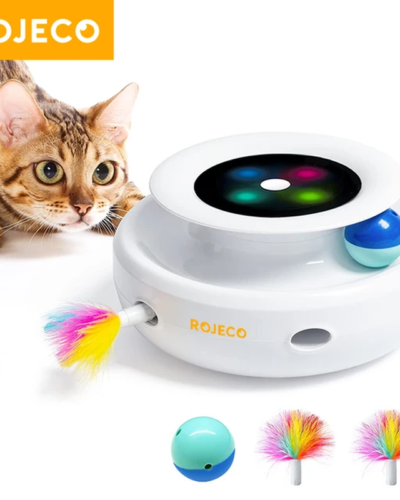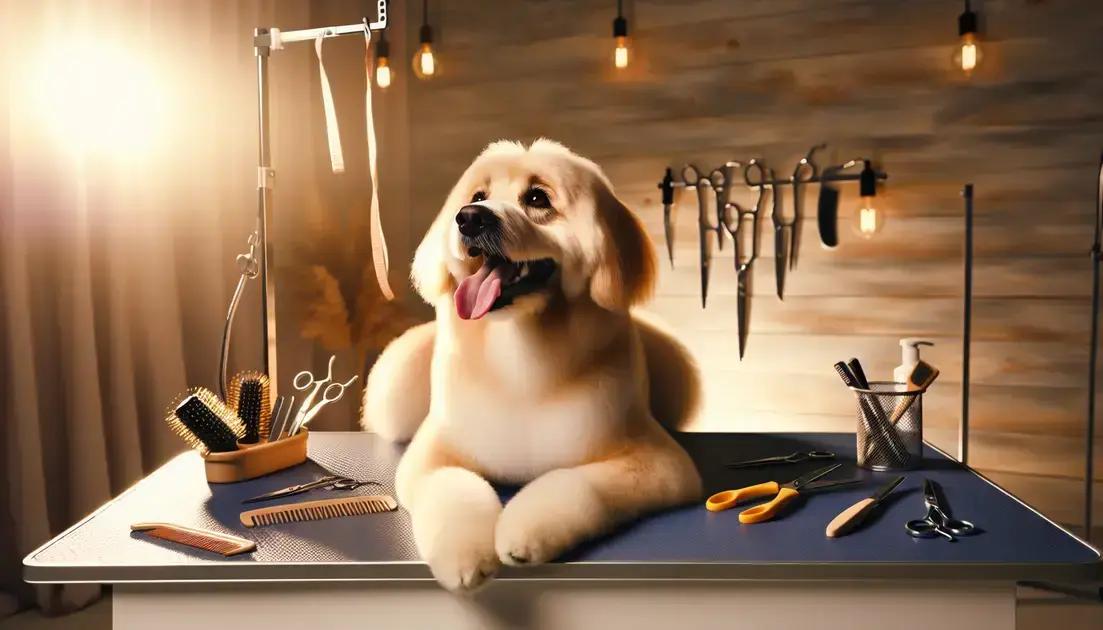-
×
 Smart Cat Toys Automatic Feather 2 in 1
1 × 37.98 £
Smart Cat Toys Automatic Feather 2 in 1
1 × 37.98 £ -
×
 Rechargeable Motion-Activated Cat/Dog Laser Toy
1 × 18.66 £
Rechargeable Motion-Activated Cat/Dog Laser Toy
1 × 18.66 £
Subtotal: 56.64 £
 Smart Cat Toys Automatic Feather 2 in 1
1 × 37.98 £
Smart Cat Toys Automatic Feather 2 in 1
1 × 37.98 £  Rechargeable Motion-Activated Cat/Dog Laser Toy
1 × 18.66 £
Rechargeable Motion-Activated Cat/Dog Laser Toy
1 × 18.66 £ Subtotal: 56.64 £

Dog grooming tips are vital for your pet’s health and happiness. Regular grooming not only keeps your dog looking neat but also contributes to their overall well-being. In this guide, we’ll explore various dog grooming techniques, the benefits of pet grooming, and common mistakes to avoid. Embrace these grooming tips and ensure your furry friend remains healthy and content.
Knowing your dog’s grooming needs is crucial for their health and happiness. Different breeds and sizes have varied grooming requirements that, if overlooked, can impact their well-being. Consider the fur type; long-haired breeds need more frequent attention to prevent mats and tangles. Short-haired breeds might not require daily brushing, but regular grooming still promotes healthy skin and a glossy coat.
Pay attention to specific needs like nail trimming, as overgrown nails can cause discomfort or even injury. Regular checking and cleaning of their ears help prevent infections. Dental care is also part of grooming; clean teeth contribute to overall health.
Bathing frequency varies; some dogs need monthly baths, others might need them more frequently if they’re particularly active outdoors. Use a gentle shampoo designed for dogs to avoid skin irritations. Monitoring and cleaning their paws is vital, especially after outdoor activities.
Incorporating grooming into a routine creates an opportunity to inspect your dog for any unusual lumps or skin changes, making early detection of potential health problems possible.
Understanding these needs lets you provide targeted care, ensuring your pet looks their best and is in peak health. Tailoring your approach based on these needs makes a significant difference in maintaining their health and happiness.
When diving into the world of canine care, having the right tools and supplies is crucial. A well-stocked grooming kit not only makes the process smoother but enhances the experience for both you and your pet. Here’s a look at some essential items every dog owner should have at their disposal.
Brushes and Combs: Start with a high-quality brush suitable for your dog’s hair type. There are slicker brushes for long-haired breeds, bristle brushes for short-haired, and deshedding tools for heavy shedders. Regular brushing helps prevent mats and keeps the coat looking healthy.
Shampoos and Conditioners: Choose canine-specific shampoos that cater to your dog’s skin sensitivity and coat. Gentle, pH-balanced formulas are advised. Conditioners can also be beneficial, leaving your dog’s fur soft and more manageable.
Nail Clippers: Proper nail care is vital for your pet’s comfort and mobility. Invest in quality nail clippers or a nail grinder designed specifically for dogs. Regular trimming reduces the risk of splits and injuries.
Ears and Eyes Grooming Supplies: Ear infections can be common, so keeping ears clean is crucial. Look for ear cleaning solutions that help remove debris and wax gently. Similarly, gentle eye wipes keep the eyes clear and free from discharge.
Clippers and Scissors: Many breeds benefit from regular trimming. Electric clippers are ideal for larger areas, while scissors help fine-tune certain spots for a polished look. Make sure they are sharp and of high quality.
Dental Care Products: Oral hygiene shouldn’t be overlooked. Dental chews, toothbrushes, and specially formulated toothpaste keep your dog’s teeth and gums healthy, reducing tartar build-up and bad breath.
Grooming Tables and Restraints: A stable surface can make a world of difference in grooming ease. Tables with restraints ensure safety and security, enabling you to tackle each task efficiently.
Having these tools ready not only streamlines the grooming process but also builds a bond of trust and cooperation between you and your dog. Investing in quality grooming supplies is a step forward in ensuring your pet’s happiness and health.
Regular dog grooming is essential for maintaining your dog’s coat and skin health. A step-by-step process ensures you cover all necessary aspects of grooming, making it efficient and stress-free for both you and your pet. Start by brushing your dog’s fur to remove tangles and loose hair. This not only keeps the coat neat but also stimulates natural oils which contribute to a shiny and healthy appearance.
Next, move on to bathing your dog. Use a pet-friendly shampoo suited for your dog’s skin type. Ensure you rinse thoroughly to avoid residue that can lead to skin irritation. After bathing, dry your dog with a towel or a pet dryer set to a low heat to prevent overheating or burns.
Pay attention to the trimming of nails. Long nails can cause discomfort or even lead to injuries. Use a nail clipper designed for dogs, and cut carefully to avoid hitting the quick, which can cause bleeding and pain.
Don’t forget about the dog’s ears and teeth. Clean the ears gently with a vet-approved cleaner to avoid infections. Regularly brushing your dog’s teeth will prevent dental issues, contributing to overall health.
Lastly, consider the type and hairstyle appropriate for your dog’s breed. Regular grooming can enhance your dog’s appearance and well-being significantly, making it a vital part of pet care routines.
A common mistake in dog grooming is neglecting regular brushing, which helps remove dirt, spread natural oils, and prevent tangles. Skipping the ears is another oversight; keep these clean to avoid infections. Pay attention to the frequency of bathing; too often can strip essential oils, while too rare may lead to odours and skin problems. Improper nail trimming can result in discomfort, pain, or even injury, so learn the correct procedure or consult a professional. Incorrect use of grooming tools specific for a dog’s coat type can lead to ineffective grooming or actual harm. Always use a brush suitable for the breed and be aware of sensitive areas. Additionally, overlooking dental care in grooming routines can contribute to dental diseases, so ensure brushing is part of the process. Finally, avoid cutting the coat too short without considering the dog’s breed; some need their coat for warmth and protection. Regular grooming maintains health and well-being, so being aware of these common mistakes will greatly aid in caring for your pet.
Regular grooming provides numerous benefits for your dog’s health and well-being. Skin Health is crucial to prevent issues such as dryness and irritation. Brushing removes dead hair and distributes natural oils across the skin, ensuring your dog retains a healthy coat. A regular grooming schedule can help identify fleas, ticks, and other parasites early, allowing for timely treatment and prevention of potential health problems.
Besides the physical advantages, grooming also provides psychological benefits. It’s an excellent opportunity for you and your pet to bond, building trust and deepening your relationship. Many dogs find the process calming and relaxing, helping to reduce anxiety and stress.
Don’t overlook the importance of checking your dog’s ears and eyes during grooming sessions. Cleaning their ears can help prevent infections caused by wax buildup and dirt, while ensuring the eyes are free of stains and debris contributes to comfortable vision.
Trimming your dog’s nails is essential in preventing painful overgrowth and avoiding issues such as splayed feet or infections. By maintaining a regular grooming routine, you ensure your dog leads a comfortable, happy life benefiting from both the physical and emotional aspects of care.
When the seasons change, so do your dog’s grooming needs. In spring, shedding can be a significant concern as dogs lose their winter coats. Regular brushing helps reduce hair around the home and keep your dog’s skin healthy. Use a de-shedding tool or an undercoat rake to manage heavy shedding.
During summer, grooming helps keep your dog cool and comfortable. Depending on the breed, a shorter trim might be ideal, but always avoid shaving the coat too short since this can lead to sunburn. It’s essential to check for ticks and fleas more frequently during this season.
In autumn, focus on bathing and conditioning to remove any lingering summer debris and to prepare the skin and coat for the coming colder months. This is also a great time to ensure paws are healthy, as fallen leaves and wet ground can lead to infections.
Winter grooming involves keeping your dog’s coat at a suitable length to offer insulation, but not so long that it becomes matted or tangled. Regular baths, while less frequent, are still necessary to keep fur dirt-free. Dry your dog completely after baths to prevent chills, and consider using moisturisers for their paws, as dry, cracked paws are common during cold months.
When it comes to grooming your dog, the decision between choosing a professional groomer and doing it yourself at home can impact the health and happiness of your pet.
One of the primary considerations is the expertise and experience offered by a professional groomer. These trained individuals are often knowledgeable about various dog breeds and their specific grooming needs. Moreover, professional groomers have access to specialised equipment and quality products that might not be readily available for home grooming. This can result in a more polished and thorough grooming session.
On the other hand, home grooming allows for a more personal touch. It enables you to spend quality time with your pet and can make their grooming experience less stressful, as they are in a familiar environment. Regular home grooming also provides an opportunity to monitor your dog’s health by checking for any irregularities such as lumps, ticks, or skin irritations.
Financially, grooming your dog at home can be more economical in the long run, as professional grooming sessions, depending on the size and breed of your dog, can add up. However, it’s important to invest in the right equipment such as brushes, clippers, and shampoos to ensure that your dog still receives quality care.
Grooming your dog at home requires a regular time commitment. Depending on your dog’s coat and temperament, grooming can be a lengthy process. Conversely, a visit to a professional groomer takes this time burden off your shoulders, freeing up your schedule.
Ultimately, whether you opt for a professional groomer or home grooming, it is essential to maintain a regular grooming routine. Regular grooming promotes healthy skin, reduces shedding, prevents matting, and keeps your dog comfortable and happy.
COPYRIGHT © PROMOTE PET. ALL RIGHTS RESERVED. © 2024 Chofard Enterprise Ltd. Chofard Enterprise is a company registered in England and Wales with a company number 13073779 VAT number GB 370644889. 16, Cromwell Close, Oxford OX30RW, United Kingdom – trading as Promote Pet Online Shop.